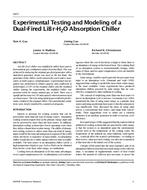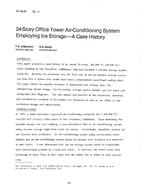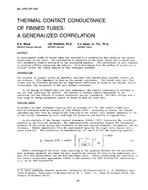Metal stud wall systems for residential buildings are gaining in popularity. Strong thermal bridges caused by highly conductive metal studs degrade the thermal performance of such walls. Analyses a series of promising metal stud wall configurations. Some of these walls were designed and tested by the authors, some were tested in other laboratories, and some were developed and forgotten a long time ago. Several types of thermal breaking systems were used in these walls. Two- and three-dimensional finite-difference computer simulations were used to analyse 20 metal stud wall configurations. A series of hot-box tests were conducted on several of these walls. Test results for 22 additional metal stud walls were analysed. Most of these walls contained conventional metal studs. Commonly used fibreglass and EPS were used as insulation materials. The most promising metal stud wall configurations have reductions in the centre-of-cavity R-values of less than 20%.
KEYWORDS: year 1997, Thermal bridges, heat flow, thermal resistance, performance, measuring, testing, thermal insulation, steel, walls, thermal properties, comparing, housing
Citation: Symposium, ASHRAE Trans. 1997, vol.103, part 1
Product Details
- Published:
- 1997
- File Size:
- 1 file , 2.2 MB
- Product Code(s):
- D-16445


